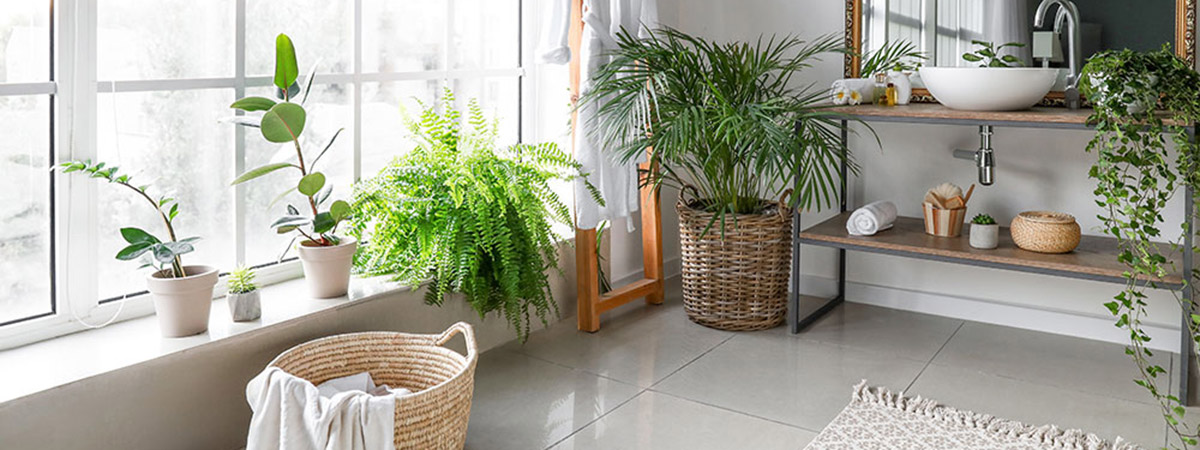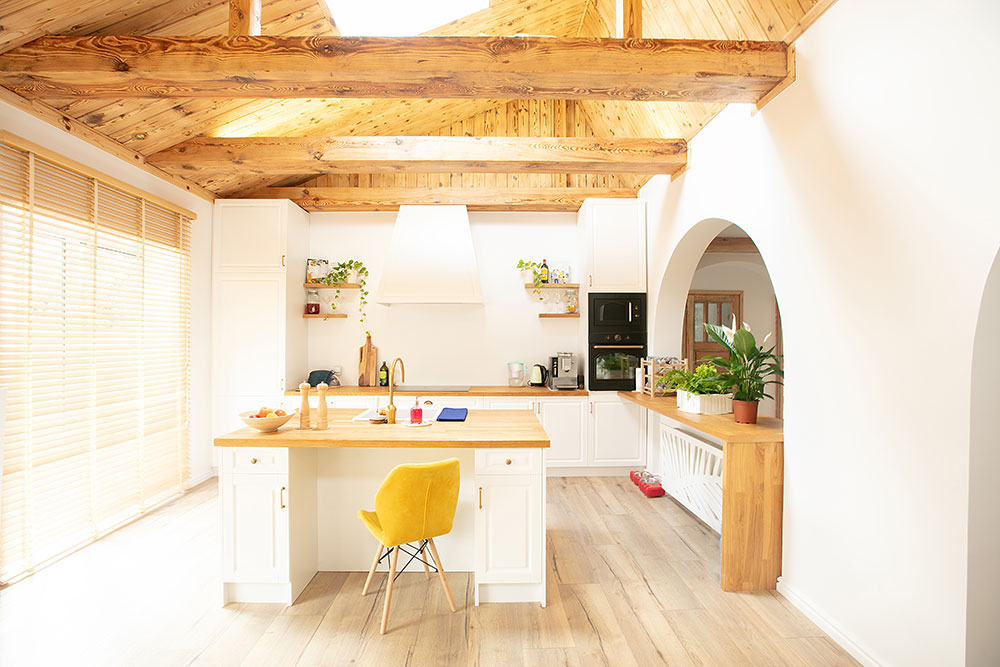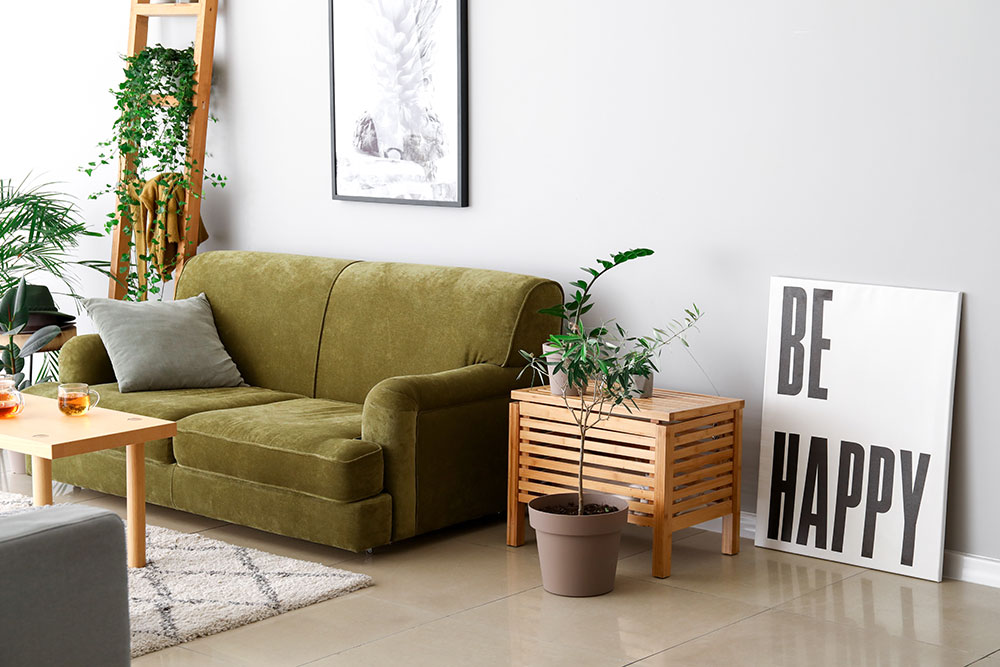
In a World that is increasingly more conscious of its environmental impact, we are seeing changes in our daily living habits. From small changes such as reusable coffee cups to more expensive things such as electric cars and solar power. However, an area that is somewhat neglected is interior design. Considering we spend vast amounts of time in our homes, eco-friendly interior design should be a priority in these ever-changing times.
Sustainable interior design uses principles in interior spaces focusing on various design aspects, including:
- Aesthetics
- Functionality
- Accessibility
- Environment
An example of a sustainable design project is one that is influenced by the mentioned factors above. It would involve planning the efficient utilisation of a room while choosing materials that have a low impact on the environment. At the same time, the design would also involve plans for reduced energy consumption, waste management, and fewer pollutants.
Your home can have sustainable interior design, too. With the growing concern for the environment these days, you may also want to take part in caring for the planet. There are many ways to achieve it, including going for sustainable materials.
This blog focuses on the three main rooms in your house: the kitchen, bathroom, and living room.
Sustainable Interior Design for Your Kitchen
Contrary to popular belief, creating a green kitchen does not have to be incredibly expensive. You can take care of the environment without breaking the bank. Also, the designs have improved so much over the past few years. You should no longer fear of having limited options.
Here are some tips on how you can achieve a sustainable design for the kitchen area:
- Incorporate the “three R’s” philosophy.
The three R’s stand for reduce, recycle, reuse. Eco-Friendly design is not just about using organic or raw materials; it is mostly about using materials that are verified to be recyclable. They may also come from recycled materials themselves. - Use furniture pieces that are free from contaminants.
Another important quality of an ecological kitchen is that it does not contain contaminants. These contaminants are dangerous materials including, chromium, mercury, asbestos, and lead.A common misconception about eco-friendly furniture in the home is that it should be made of wood. However, it can be made of any material, as long as that material does not contain any of the contaminants mentioned above. Additionally, if it is made of wood, you should look for furniture created from sustainable sources.Illegal and uncontrolled logging of trees is a problem that should be addressed as well. Therefore, if you do choose wood furniture, you should only opt for those that are manufactured in controlled plantations.A good option here is bamboo furniture. You can use cabinets made from this plant. Bamboo is durable, easily maintained and cleaned, and can resist bacteria. The plant is also lauded for its rapid growth rate. - Use sustainable benchtops.
Typically, you design your kitchen starting from your benchtops. In this case, you should select an ecological surface, which should be made from recycled materials. They can be any recyclable and recycled materials, such as mirror, glass, vitreous ash, and porcelain.You may also want to know about how the products are manufactured. Read about the company to discover how it helps reduce emissions, for instance.Aside from the three tips above, you may also want to switch to energy-efficient appliances. They may cost more, but they are worth the investment in the long run.
Sustainable Interior Design for Your Bathroom
Kitchens are not the only ones that can be designed with sustainability in mind. Here are some ways to improve your bathroom’s efficiency while staying green:
- Get rid of the bath.
Water is the biggest drain on our resources, particularly in the bathroom. While you cannot eliminate your water consumption, you can take steps to reduce it. The first step is to remove the bathtub, especially if you are just starting from scratch. Meanwhile, if you already have a tub, you can consider ripping it out if you do not use it. We recommend building a shower instead. - Check how the appliances function.
When you are still shopping for items that you will use in the bathroom, you should first check how much water they consume. For instance, toilets should use as little water as possible when you flush.Another is to look for taps and other water facilities that function properly. This way, when you turn them off, they truly turn off completely to prevent resource drainage. - Make sure that you use a good water filtration system.
If you do not have an already efficient purification system, you may want to invest in a reliable filtration system. It will help soften water, which is gentler on your hair and skin. Also, softer water prevents accumulation and growth of mould on the showerheads.During the cleaning process, many homeowners tend to forget to look at the showerheads. Therefore, it is highly recommended that you search for showerheads that you can quickly remove and replace. It also helps with the clean-up.You may also want to take care of the windows. They are the ones that let natural light in, which aid in lowering your electricity consumption during the day.
Sustainable Interior Design for Your Living Room
For many homes, the living area takes up most of the space. Therefore, it requires a lot of attention. When going for sustainable design, your living room can make a huge impact. After all, it is where you spend time with your guests or your family. It may also be where you watch TV or perform other tasks. You should look for ways to make it as eco-friendly as possible. Here are some suggestions:
- Choose the minimalist way
Going minimalist is the act of simplifying, de-cluttering, and organising your belongings, so you only have the ones you truly need. For some people, it is about storing their items, but there is more to it than hiding stuff. You should be mindful when selecting your home possessions. Then, you can move towards the minimalist approach where you choose a clean and simple look for your living area. - Buy eco-friendly décor and other items.
For a long time, green building materials and anything tagged as eco-friendly was deemed costly. It was one of the reasons why many homeowners steered clear of them. However, times have changed. Many homeowners are now happier than ever to take part in combating different environmental concerns.Today, we have various products that use natural materials. Aside from the numerous options, they are also much cheaper than before.Manufacturers strive to meet the demands of the consumers. They are now creating products that are affordable but still efficiently eco-friendly. For instance, you can find backsplashes made with bio-glass, which is recycled glass. Another example is veneer cork flooring, which is not only stylish but also a sustainable material. - Go for lighter colours.
You may think that colours do not have an impact on the sustainability design of your living room (or any part of the house). However, the selected hue can affect the practice. Using lighter tones can help you achieve your sustainability goals.If you are wondering how here is the answer. Lighter hues can help you save money, especially money that you spend on lighting. You do not have to go for an all-white colour scheme if it sounds boring for you.You can have the same benefit and effect if you choose paler hues. These colours will reflect more light in the living area. On the other hand, if you opt for darker décor and walls, you will have to increase the lighting in this room. Unless you have huge windows, you will have to pay more out of artificial lighting.Choosing lighter hues can also help you skip out on fumes and chemicals that are in the air because of the bright paints.Of course, it does not mean paler colours are the only safe hues around. You can still choose bright colours, but you should know that it can affect how the room receives light. At the same time, you should only choose a company that manufactures products, including paints, with less abrasiveness. These paints are better for the environment and your health as well.
More Tips towards Sustainability
You can go beyond the aesthetics with interior design. You may be tempted to go for an attractive piece for your lighting, but you should first consider if it will help you save on power bills. Reflective surfaces are beginning to become more popular these days. They take more light in, so it bounces from one room to another. Therefore, you do not need to install a lot of artificial lights.
You can also add carpets, which have many benefits. If you have kids running around almost all the time, you can sleep peacefully when you have a carpet installed. Carpets are good sound insulators, so they can reduce noise and sound vibrations. Even better, they can help improve the quality of indoor air. Carpets can trap dust from the air that will stay in the fibres until you vacuum.
Finally, you do not have to look for expensive decorations in your living room, bathroom, or kitchen. You can choose plants instead, which provide oxygen while filtering out chemicals. Also, they are naturally beautiful and create freshness in your home. To get your sustainable renovation underway, contact Perth Renovations Co.



